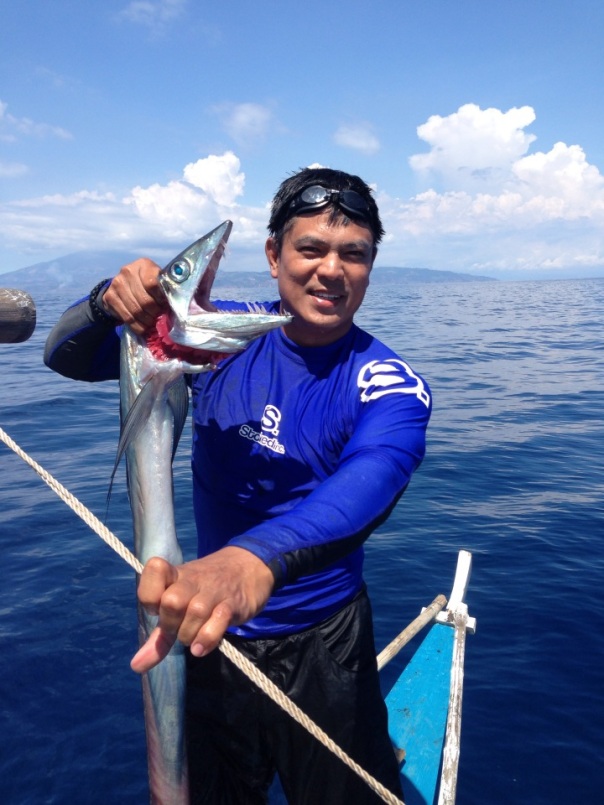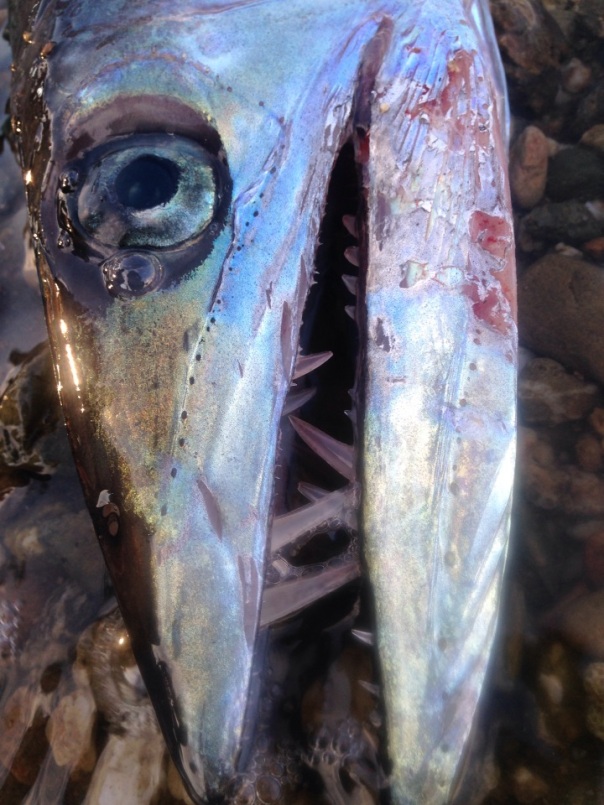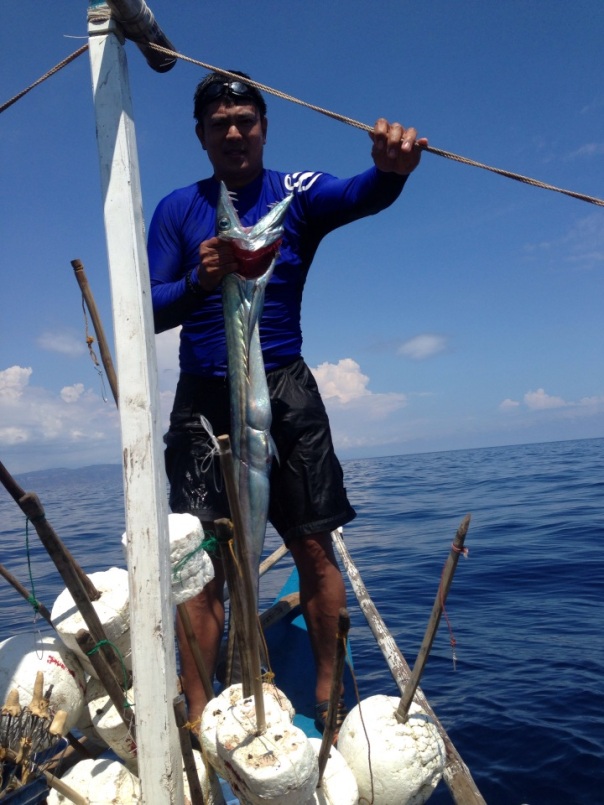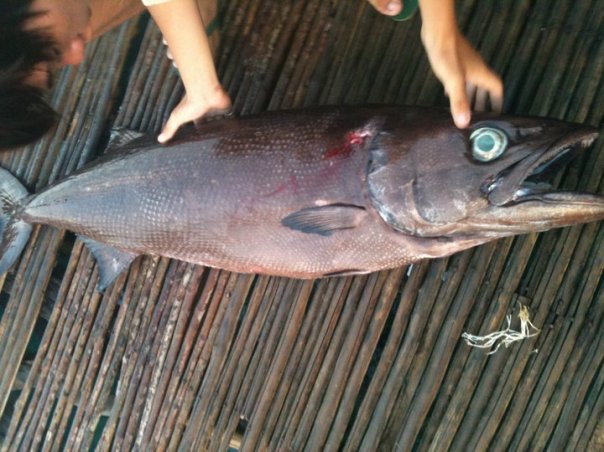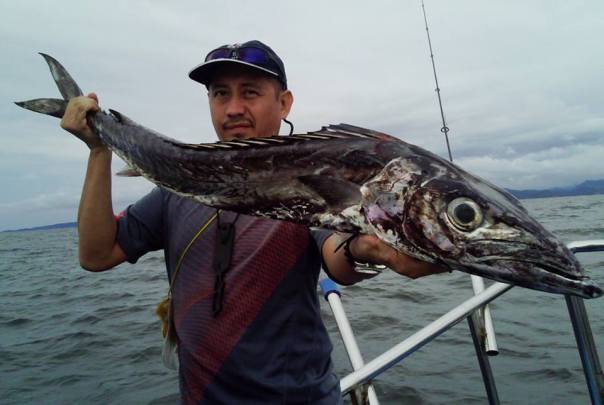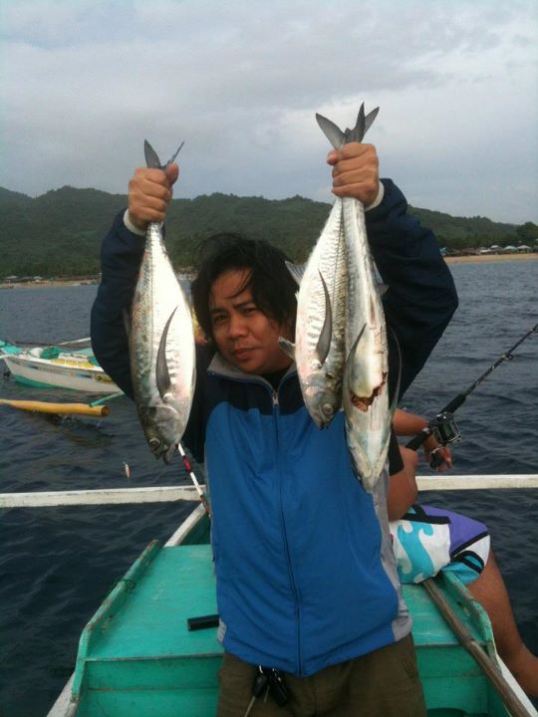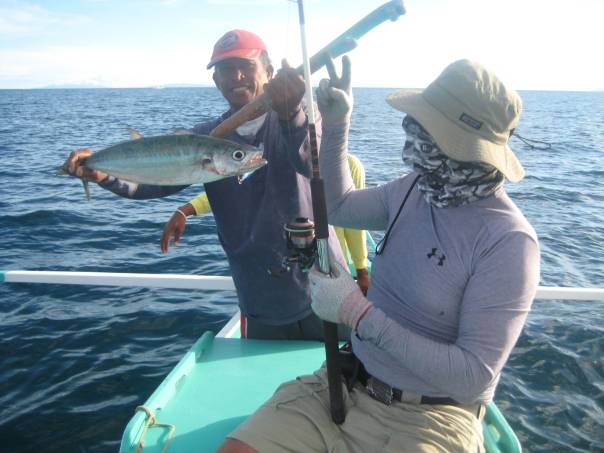Category Archives: Mackerel (Tangigue)
Oilfish ( Ruvettus pretiosus )
Common Name: Oilfish
Local Name: ?? (Tagalog); Penahon (Cebuano)
Max Size: 300 cm (63.5 kgs)
Biodiversity: Marine, Benthopelagic, Oceanodromous
Depth: 100 – 800 meters
Fishing Season: None
Minimum Size Limit: None
Recommended Bait/Lures: Fish (cutbait or whole) , squid
IUCN Red List Status Status: Not Listed
This species is a deepwater species related to the Snoek (Snake Mackerel). These are relatively rare to see around the country due to the depth at which they live. These fish are called oilfish due to the high oil content of their flesh. They are edible and delicious however eating large quantities of this fish’s flesh causes a laxative effect which can be quite disturbing. It is recommended that if you eat this fish that you don’t eat very much.
Wahoo ( Acanthocybium solandri )
Common Name: Wahoo
Local Name: Tangigue (Tagalog), Tanigue (Cebuano)
Max Size: 250 cm ( 83 kgs )
Biodiversity: Marine, Pelagic-Oceanic, Oceanodromous
Depth: 0 – 12 m
Fishing Season: All Year Long
Minimum Size Limit: None
Wahoo are another one of the popular big game fish here in the Philippines. They are abundant through out the islands ranging in size from small juveniles to large adults. Wahoo are often sometimes known as Black Tangigue to distinguish them from the Spanish Mackerel or White Tangigue. These fish are most often caught while trolling large lures of fresh bait behind a boat. Wire leaders are a must when fishing for these fish or fishing in a place where these fish may be caught. They have razor sharp teeth which can easily slice through heavy monofilment and fluorocarbon line.
Joshua caught the Wahoo in the picture above in northern Luzon while trolling. Notice the beak-like mouth which helps distinguish it from the Spanish Mackerel.
Horse Mackerel ( Megalaspis cordyla )
Here are CJ and JR’s three Horse mackerel or Torpedo Scad which they caught while trolling small Rapala lures around the reefs of Laiya. This species was called Tanigue by the locals, because there is little differentiation between species of mackerel like fish. These fish are schooling pelagics and are commonly caught around 20-30 cm in size. These fish can grow up to 80cm and weigh around 4kgs.
Narrow Barred Spanish Mackerel (Scomberomorus commerson)
This is a very popular gamefish here in the Philippines which I have not yet caught. This is Chito with his 11+ lbs Spanish Mackerel. This fish was taken on a large trolling spoon trolled from a Pump Boat or Banka.
These fish (and various other related species) are known throughout the Philippines as Tanigue or Tangingue. They are sought mainly by trolling lure such as; large spoons, large Rapala-like minnow lures, Squid Skirts, live bait, dead bait, and various other lures.
These Macs can grow quite large, up to 30+kgs, though most caught around the Philipines are around 2-10kgs. They lurk near reefs, and other structure and feed on smaller fish and squid.
Good times for trolling for these fish are at sunrise and sunset as that is when they are most active.
When fishing for Tanigue be sure to use a heavy mono (or fluoro) leader 0r a steal leader as these fish have razor sharp teeth.
Here is a link to the Fish Base page on this species: http://www.fishbase.org/summary/Scomberomorus-commerson.html
Double-Lined Mackerel in Laiya
Last monday a friend from the Marshall Islands and I went out trolling in Laiya, Batangas.
This Double-Lined mackerel (called a Tangigue by the local guys) took this 11cm blue Strike Pro Titan at around 4:30pm.
We were trolling slow not far from shore when we hooked up. Here is another shot of the fish:
As you can see we also got a 6kg Dorado bull who is poking his head into the pic 🙂
Here are some links about the fish:
Wikipedia – http://en.wikipedia.org/wiki/Double-lined_mackerel
Fishbase – http://fishbase.org/Summary/SpeciesSummary.php?ID=104&AT=Double-Lined+Mackerel

